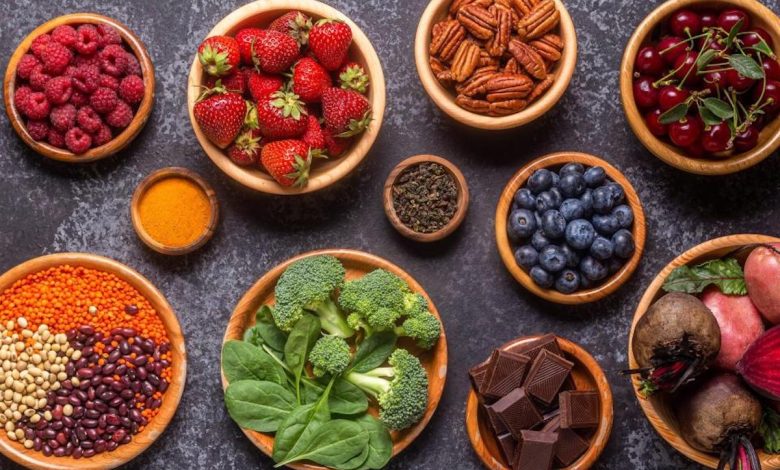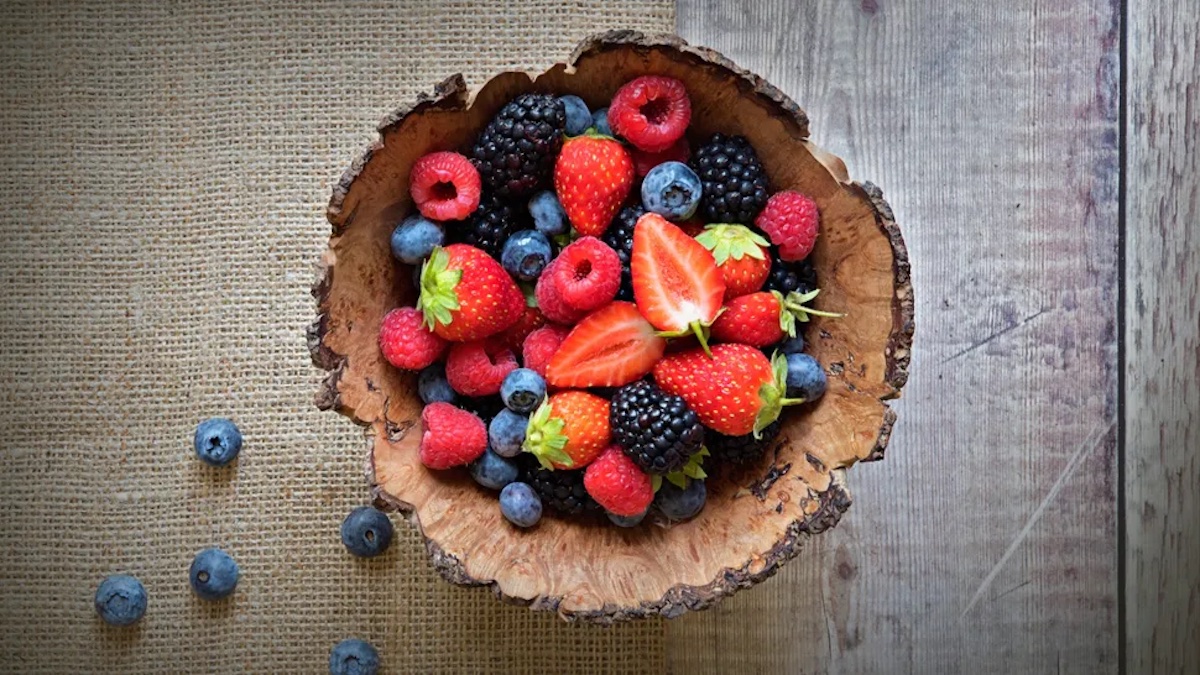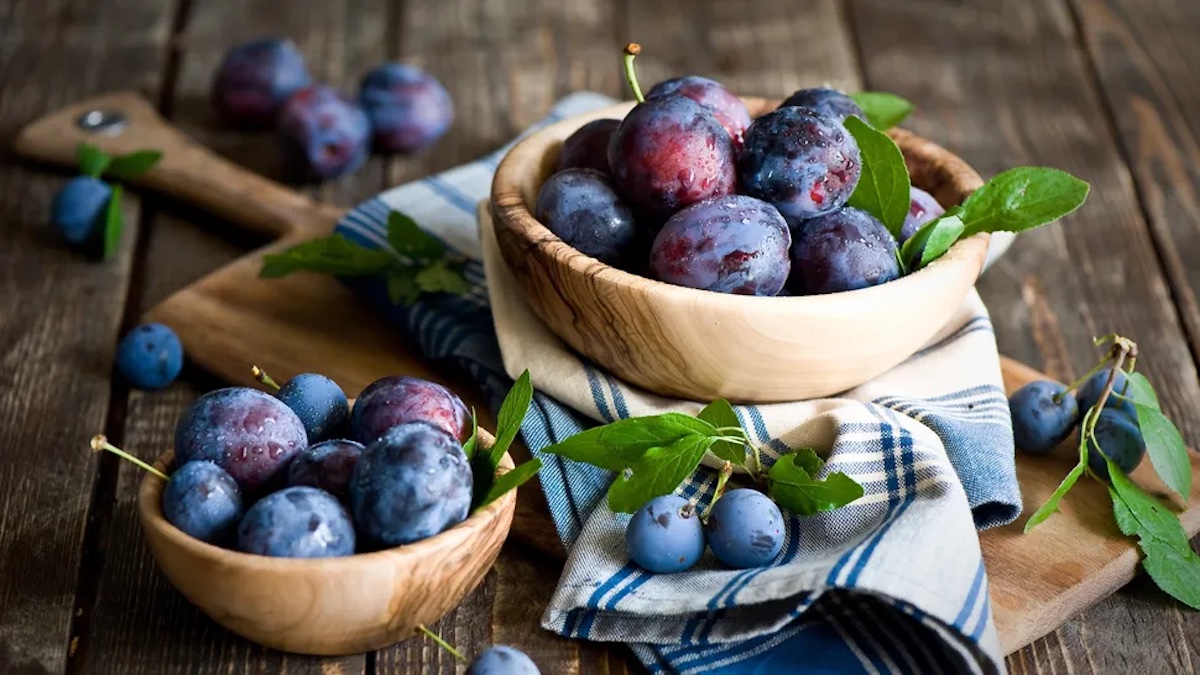The Best Fruits to Eat for Antioxidants, According to Nutritionists

Antioxidant-rich fruits: In today’s fast-paced world, where pollution, stress, and unhealthy eating habits have become part of our daily lives, the importance of antioxidants cannot be overstated. These powerful compounds help neutralize free radicals in the body, reducing oxidative stress and preventing cell damage. One of the most effective and delicious ways to get a steady supply of antioxidants is by consuming fresh fruits.
Nutritionists consistently emphasize the value of incorporating a variety of antioxidant-rich fruits into the diet. Not only are these fruits packed with vitamins and minerals, but they also contribute to better skin, improved immunity, and lower risk of chronic diseases. Here are some of the best fruits to eat for antioxidants, based on expert advice.
1. Blueberries: The Antioxidant Powerhouse
Blueberries top nearly every nutritionist’s list when it comes to antioxidant-rich foods. These tiny berries are loaded with anthocyanins, the pigments responsible for their deep blue color. Anthocyanins are known for their powerful antioxidant effects, helping to reduce inflammation, protect the brain, and support heart health.
According to the USDA, blueberries have one of the highest antioxidant capacities among all fruits and vegetables. Eating just a handful of blueberries a day can help slow down aging at the cellular level, improve memory, and even reduce the risk of cancer.
How to eat them: Add fresh or frozen blueberries to oatmeal, yogurt, smoothies, or enjoy them on their own as a snack.
2. Strawberries: Sweet and Heart-Healthy
Strawberries are not only juicy and delicious but also rich in vitamin C, flavonoids, and polyphenols, all of which contribute to their antioxidant activity. Vitamin C, in particular, is essential for collagen synthesis, wound healing, and boosting immune function.
Research shows that regular consumption of strawberries can reduce oxidative stress, lower blood pressure, and improve cholesterol levels. Their high fiber content also supports digestive health.
How to eat them: Enjoy strawberries sliced over whole-grain cereal, blended into smoothies, or dipped in dark chocolate for a guilt-free treat.
3. Pomegranates: The Ancient Superfruit
Pomegranates have long been celebrated in traditional medicine for their healing properties. Modern science confirms that pomegranates are rich in polyphenols, especially punicalagins, which are powerful antioxidants found in the juice and peel of the fruit.
Antioxidant-rich fruits, Pomegranate antioxidants are particularly effective in fighting inflammation, supporting cardiovascular health, and potentially reducing the growth of cancer cells. Some studies even suggest that drinking pomegranate juice daily can improve memory and cognitive performance.
How to eat them: Sprinkle pomegranate seeds over salads, yogurt, or rice dishes, or drink freshly squeezed pomegranate juice.

4. Grapes: Small but Mighty
Grapes, especially red and purple varieties, are another excellent source of antioxidants. They contain resveratrol, a compound found in grape skins that has been linked to anti-aging, anti-inflammatory, and cancer-fighting properties.
Nutritionists highlight grapes as a heart-healthy snack, thanks to their ability to relax blood vessels, reduce blood pressure, and prevent the oxidation of LDL cholesterol — a key factor in heart disease.
How to eat them: Snack on fresh grapes, freeze them for a refreshing treat, or add them to salads and cheese boards.
5. Cherries: A Natural Anti-Inflammatory
Cherries, particularly tart cherries, are well-known for their high levels of anthocyanins and melatonin. Melatonin not only helps regulate sleep cycles but also functions as an antioxidant, combating oxidative stress and reducing inflammation.
Nutritionists often recommend cherries for athletes or individuals with arthritis because they help reduce muscle soreness and joint pain. They’re also associated with improved sleep quality and recovery after exercise.
How to eat them: Drink tart cherry juice, add cherries to smoothies, or enjoy them as a snack during cherry season.
6. Oranges: Vitamin C and Beyond
Antioxidant-rich fruits, Oranges are widely known for their high vitamin C content, but they’re also rich in flavonoids like hesperidin and narirutin. These compounds boost the antioxidant power of oranges and provide benefits such as reducing inflammation, supporting blood vessel function, and boosting immunity.
Oranges are also hydrating, low in calories, and versatile in both sweet and savory dishes.
How to eat them: Drink fresh orange juice (without added sugar), eat whole oranges for fiber, or zest the peel into baked goods for extra flavor and antioxidants.
7. Apples: Everyday Antioxidants
The saying “an apple a day keeps the doctor away” holds truth when it comes to antioxidants. Apples contain a variety of antioxidant compounds, including quercetin, catechin, and chlorogenic acid.
Quercetin is particularly noted for its anti-inflammatory and immune-boosting effects. Most of the antioxidants in apples are found in the skin, so it’s best to eat them unpeeled whenever possible.
How to eat them: Enjoy apples raw, baked, or sliced with a spoonful of nut butter for a filling and nutritious snack.
8. Kiwi: A Tangy Dose of Vitamin C
Kiwi is another fruit that’s often underappreciated despite its impressive antioxidant profile. Packed with vitamin C, vitamin E, and carotenoids, kiwi helps protect cells from oxidative damage and supports immune health.
Healthy diet, Its green flesh is rich in actinidin, an enzyme that aids digestion and promotes gut health — another pathway through which antioxidants can influence overall well-being.
How to eat them: Slice kiwi into salads, blend into smoothies, or eat it straight with a spoon after cutting it in half.

9. Mangoes: Tropical and Nutrient-Dense
Mangoes are not only sweet and satisfying but also packed with antioxidants like beta-carotene, vitamin C, and mangiferin. Beta-carotene is a precursor to vitamin A and plays a role in maintaining eye health and boosting immunity.
Antioxidant-rich fruits, Mangiferin, a polyphenol found in the mango pit and flesh, has been studied for its potential to reduce inflammation and protect against metabolic disorders.
How to eat them: Blend mango into smoothies, use it in salsas, or enjoy it fresh and cubed.
10. Acai Berries: Trendy but True Superfood
Acai berries have gained popularity for a reason. These dark purple berries native to the Amazon rainforest contain extremely high levels of anthocyanins and other antioxidants. Studies have shown that acai has a higher antioxidant capacity than many other fruits.
Nutritionists recommend acai for its anti-aging properties, energy-boosting effects, and potential benefits for brain and heart health.
How to eat them: Look for unsweetened acai puree or powder and use it to make acai bowls or blend into smoothies.
Why Antioxidants Matter
Antioxidants are crucial in defending the body against free radical damage, which has been linked to chronic conditions such as heart disease, cancer, diabetes, and neurodegenerative disorders. Fruits rich in antioxidants help reduce inflammation, promote healthy aging, and enhance immune function.
By including a wide variety of colorful fruits in your daily diet, you ensure that your body receives a broad spectrum of these protective compounds. Eating them fresh, raw, and in season maximizes their nutritional benefits.
Final Thoughts
When it comes to boosting your antioxidant intake, nature has already provided the perfect package in fruits. From blueberries and pomegranates to oranges and acai berries, each fruit brings a unique combination of antioxidants that support optimal health.
Nutritionists agree that the key is diversity — mixing and matching fruits not only keeps your diet interesting but also ensures comprehensive protection against oxidative stress. So next time you’re shopping for groceries, fill your basket with these vibrant, nutrient-packed fruits and give your body the antioxidant boost it deserves.
Also Read:
The Best Skin Care Routine For 40s
Oxygen Facial Benefits: The 9 Amazing Benefits Of Oxygen Facial For Glowing Skin




